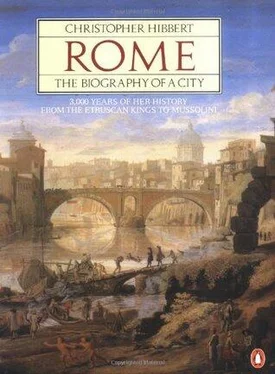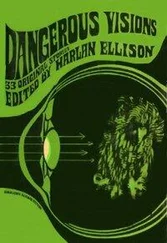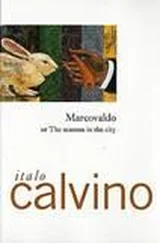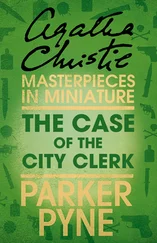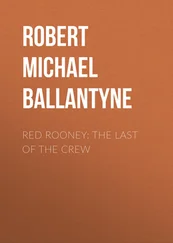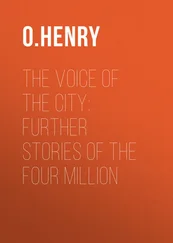Christopher Hibbert - Rome. The Biography of the City
Здесь есть возможность читать онлайн «Christopher Hibbert - Rome. The Biography of the City» весь текст электронной книги совершенно бесплатно (целиком полную версию без сокращений). В некоторых случаях можно слушать аудио, скачать через торрент в формате fb2 и присутствует краткое содержание. Жанр: Культурология, Искусство и Дизайн, на английском языке. Описание произведения, (предисловие) а так же отзывы посетителей доступны на портале библиотеки ЛибКат.
- Название:Rome. The Biography of the City
- Автор:
- Жанр:
- Год:неизвестен
- ISBN:нет данных
- Рейтинг книги:3 / 5. Голосов: 1
-
Избранное:Добавить в избранное
- Отзывы:
-
Ваша оценка:
- 60
- 1
- 2
- 3
- 4
- 5
Rome. The Biography of the City: краткое содержание, описание и аннотация
Предлагаем к чтению аннотацию, описание, краткое содержание или предисловие (зависит от того, что написал сам автор книги «Rome. The Biography of the City»). Если вы не нашли необходимую информацию о книге — напишите в комментариях, мы постараемся отыскать её.
Rome. The Biography of the City — читать онлайн бесплатно полную книгу (весь текст) целиком
Ниже представлен текст книги, разбитый по страницам. Система сохранения места последней прочитанной страницы, позволяет с удобством читать онлайн бесплатно книгу «Rome. The Biography of the City», без необходимости каждый раз заново искать на чём Вы остановились. Поставьте закладку, и сможете в любой момент перейти на страницу, на которой закончили чтение.
Интервал:
Закладка:
34. The PALAZZO CHIGI-ODESCALCHI in the Piazza SS. Apostoli, having belonged successively to the Colonna, the Ludovisi and the Chigi families, was rebuilt for the Odescalchi, the family of Innocent XI (1676–89), by Bernini in 1664. The courtyard is by Carlo Maderno ( c . 1623); the wings were added in the middle of the eighteenth century by Nicola Salvi and Luigi Vanvitelli.
35. The small Egyptian OBELISK IN PIAZZA DELLA MINERVA, of the sixth century B.C., was found in the ruins of the Temple of Isis, a part of whose precincts formed the garden of the Dominican convent attached to the church of S. MARIA SOPRA MINERVA. The supporting elephant was sculpted in marble to Bernini's designs in 1667.
13. IL SETTECENTO
1. The confraternity which cared for the Hospice and church of S. TRINITÀ DEI PELLEGRINI was founded by St Philip Neri for the benefit of pilgrims in the Holy Year of 1550. The large hospice building was completed in 1625, thirty-three years after St Philip's death. It was converted into a foundling hospital in the nineteenth century.
2. Built in 1580–82 to serve the adjoining hospital for Polish pilgrims, the church of S. STANISLA DEI POLACCHI, on the corner of Via delle Botteghe Oscure and Via dei Polacchi, is dedicated to the Bishop of Cracow, murdered in 1072 by King Boleslaw II whom he had rebuked for leading a disorderly life.
3. The church of S. MARIA DI MONSERRATO near the Piazza Farnese was built for the Borgia Pope Alexander VI whose remains, together with those of his fellow Spaniard, Calixtus III (1455–8), were transferred here from ST PETER'S. It was formerly attributed to Antonio da Sangallo the elder, but is now thought to be more probably the work of his nephew. Francesco da Volterra designed the portal of the façade.
4. The church of SANT’ ANTONIO, whose ornate Baroque façade faces on to Via dei Portoghesi, was begun towards the middle of the seventeenth century on the site of a church built for the Portuguese colony in Rome during the pontificate of Eugenius IV (1431–47). The architects were Gaspare Guerra, Carlo Rainaldi and Cristoforo Shor, one of a family of artists from Innsbruck who completed it in 1695. The façade is by Martino Longhi the younger. The monument to Alessandro de Souza is by Canova, the Madonna and Child by Antoniazzo Romano.
5. The church of SAN LUIGI DEI FRANCESI, near the PALAZZO MADAMA, was founded by Pope Leo X, whose cousin, Cardinal Giulio de' Medici later Pope Clement VII, laid the foundation stone. Giacomo della Porta probably designed the late-Renaissance façade which has also been attributed to Domenico Fontana. Work on the church was delayed from 1524 until 1580 when during the Regency of Catherine de Medicis, Domenico Fontana was commissioned to complete the building, which was consecrated in 1589. The frescos of the life of St Cecilia are by Domenichino, and the fine paintings in the chapel of St Matthew by Caravaggio.
6. Established in 1550 by the Portuguese St John of God, the religious order of the Fatebenefratelli founded their Roman Hospital of SAN GIOVANNI DI DIO on the Tiber Island, probably on the site of a medieval hospice. Tradition has it that Rahere, the Augustinian of Frankish descent who was a denizen of the English court of William II, came here to recover from an attack of malarial fever, and was inspired by his visit to establish St Bartholomew's, London's oldest hospital, which was founded in 1123. The hospital of San Giovanni was rebuilt in 1930 by Cesare Bazzani. The adjoining church of SAN GIOVANNI CALABITA, which also belongs to the order, was reconstructed in 1640. The rich interior (1736–41) is by Romano Carapecchia. The church of S. BARTOLOMEO ALL' ISOLA was founded in the tenth century by the Emperor Otto III. It was rebuilt from 1583 to the designs of Martino Longhi the elder. The façade (1624–5) is probably by Orazio Torriani.
7. The Hospital of SAN GALLICANO IN TRASTEVERE off the Via Trastevere was completed by Filippo Raguzzini in 1725.
8. The Hospital of S. MARIA DELLA PIETÀ founded in 1561 by a priest, Ferrante Ruis, who also built the church of the same name. The church, which is in the Piazza Colonna, was rebuilt by Gabriele Valvassori in 1731–5.
9. The huge OSPIZIO DI SAN MICHELE was founded in the sixteenth century on the riverside just above the Ponte Sublicio. The present building was designed in the seventeenth century by Carlo Fontana.
10. The Hospital of S. MARIA DELLA CONSOLAZIONE was attached to the church of the same name in the Piazza della Consolazione. Dedicated in 1470, the church was rebuilt to the designs of Martino Longhi the elder in 1583–1606.
11. The Hospital of SAN ROCCO, originally a hospital of fifty beds for men, was extended through the generosity of Cardinal Salviati for the pregnant wives of bargees. The care, in confidence, of unmarried mothers was sanctioned by Pope Clement XIV in 1770. The adjoining Church of SAN ROCCO in the Via Ripetta had been opened as a chapel in 1499 by the Confraternity of Innkeepers and Bargees. The chapel was rebuilt and enlarged in 1657 by Giovanni Antonio de' Rossi. The neo-classical façade was added in 1834 by Valadier.
12. The FRENCH ACADEMY was founded in 1666 by Colbert, the French finance minister, by order of Louis XIV. The students were at first lodged on the Janiculum near the Church of S. ONOFRIO which was founded in 1415 as a hermitage for monks of the Hieronymite Order. They were later housed in the Palazzo Salviati in the Corso. This palace was exchanged for the VILLA MEDICI on the Pincian hill above the SPANISH STEPS in 1803. The Villa Medici was built by Giovanni and Annibale Lippi of Florence for Cardinal Ricci of Montepulciano from 1540. It was bought by Cardinal Ferdinando de’ Medici in 1580 and thereafter belonged to his family until the French Academy acquired it. Galileo was held here in 1630–33. The fountain which stands in the Viale Trinità dei Monti in front of it used to have a Florentine lily in its centre. The present stone cannon-ball is said to have hit the wall of the villa when the unpredictable Queen Christina of Sweden was unwisely invited to fire a cannon into the air from Castel Sant' Angelo. The pensionnaires of the academy have included Fragonard, Ingres, Boucher, Berlioz and Debussy.
13. The TEATRO DELLE DAME was situated near the PIAZZA DEL POPOLO at the end of the Via Alibert where the Via Margutta joins the Via Babuino. It was built by Conte Antonio d'Alibert to the designs of Ferdinando Fuga. Inaugurated for the carnival of 1717, operas were performed here as well as plays. It was also known as the TEATRO ALIBERT.
14. Designed by Marchese Girolamo Teodoli for Duke Sforza Cesarini, the TEATRO ARGENTINA was rebuilt by Pietro Camporese in 1837 and has recently been restored.
15. The TEATRO CAPRANICA was in the Palazzo Capranica which was built in the sixteenth century by Cardinal Domenico Capranica. It is now a cinema.
16. Founded in 1600 by Clement VIII, possibly as a result of the Pope's earnest hope for the conversion of the Protestant King James I, the SCOTS COLLEGE in the Via delle Quattro Fontane was designed by Luigi Poletti who was responsible for the rebuilding of S. PAOLO FUORI LE MURA. The seminary has recently moved to Marino. The students wear a purple soutane and a red belt. The VENERABLE ENGLISH COLLEGE in the Via di Monserrato, established in 1362, was originally a hospice for English pilgrims. It became a college in 1579. The college buildings were restored in c . 1669–85. With some fifty other guests John Evelyn dined here during his visit to Rome in 1645 and ‘afterward saw an Italian Comedy Acted by their Alumni before the Cardinals.’
17. The PALAZZO MUTI-PAPAZZURRI in the Piazza SS. Apostoli was completed in 1644, probably to the designs of Mattia de’ Rossi.
Читать дальшеИнтервал:
Закладка:
Похожие книги на «Rome. The Biography of the City»
Представляем Вашему вниманию похожие книги на «Rome. The Biography of the City» списком для выбора. Мы отобрали схожую по названию и смыслу литературу в надежде предоставить читателям больше вариантов отыскать новые, интересные, ещё непрочитанные произведения.
Обсуждение, отзывы о книге «Rome. The Biography of the City» и просто собственные мнения читателей. Оставьте ваши комментарии, напишите, что Вы думаете о произведении, его смысле или главных героях. Укажите что конкретно понравилось, а что нет, и почему Вы так считаете.
